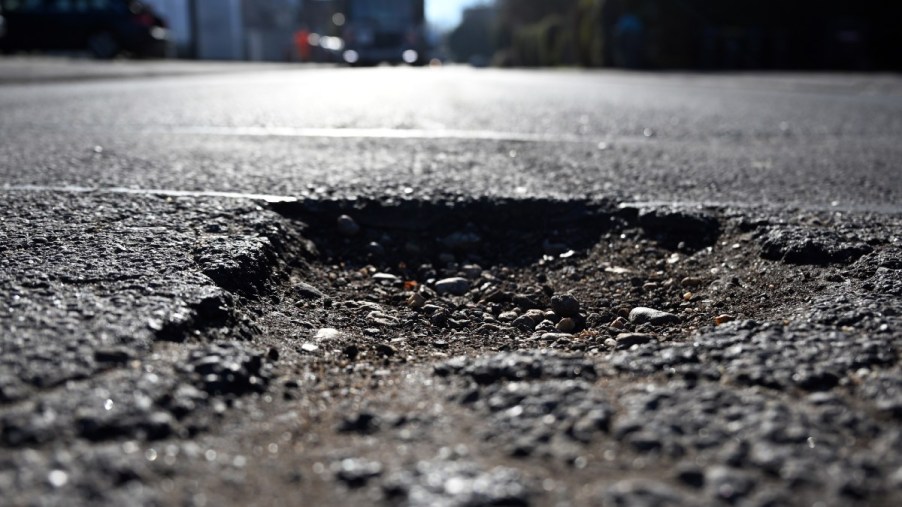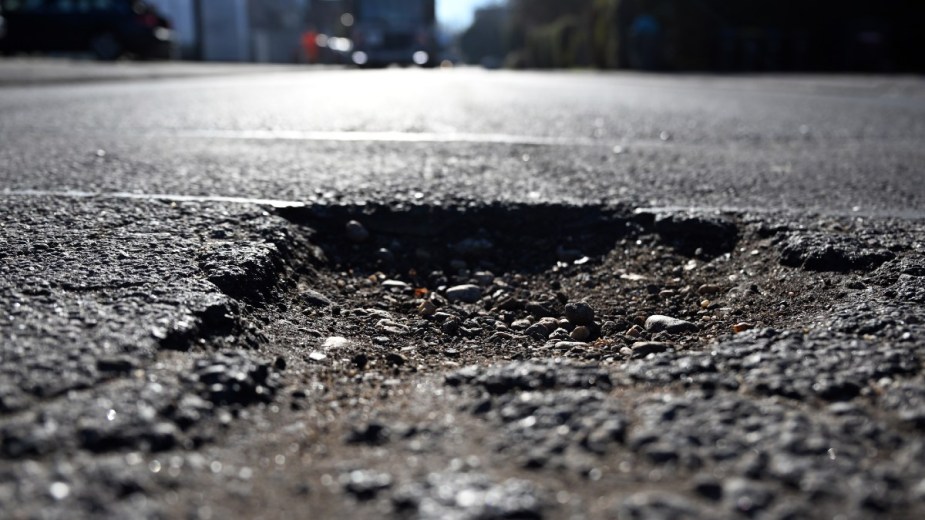
Spring Driving Challenges, Get Ready for Pothole Season
As winter passes and spring begins to thaw the cold away, one of the most challenging driving experiences begins. Once the weather begins to warm, more potholes appear in the roads than before. This can cause serious safety problems for many drives, eventually amounting to costly repairs.
How much damage do potholes cause each year?
A survey from AAA found that one in ten drivers sustain enough vehicle damage to warrant repairs after hitting a pothole in the road. The average cost of these repairs is nearly $600 per vehicle damaged by potholes; the overall cost reached $26.5 billion in 2021 alone.
How do potholes form?
The main reason potholes in the road are a spring driving challenge is the way they’re formed. The holes are created when groundwater seeps into the ground underneath the pavement. If this water freezes, it expands, causing the pavement to expand, bend, and crack. When the ice melts, gaps and voids are left in the ground under the pavement. This causes the pavement to weaken and crack.
What car parts can become damaged by potholes in the road?

The deeper the hole in the road, the more damage it can cause. Unfortunately, it can be difficult to judge how deep the hole is during spring rains. Hitting a pothole at higher speeds causes more damage than going through them slowly. The areas of your vehicle that might get damaged by a pothole are:
- Tires
- Wheels
- Suspension
- Exhaust
- Body
Tires
Your tires are the only car part that actually touches the road. Your tires are most susceptible to damage while driving, but hitting a hole in the road can be worse than running over a nail or screw. The sidewalls could bulge, or the tread might separate, causing flat tires. Cars with low-profile tires are most susceptible to damage.
Wheels
Curb rash is generally avoidable, but pothole damage can be difficult to avoid in heavy traffic. Some potholes have hard angles and sharp edges, which put enough force through the tires to damage the wheels. A bent wheel doesn’t roll smoothly and won’t drive right. This could be most of the cost you incur when facing the spring driving challenge of holes in the road.
Suspension
Your car’s suspension absorbs the impact of road imperfections to provide a smooth ride, but it has limits. Suddenly hitting a pothole causes a jarring feeling that can damage your suspension. At best, you’ll need a wheel alignment to straighten things out. At worst, damage can occur to your shocks, struts, and ball joints, costing hundreds of repair dollars.
Exhaust
Deeper potholes could cause your car to bottom out, which may damage your exhaust system. The exhaust pipes run along your vehicle’s undercarriage, which means they’re perfectly positioned for damage when forced against the pavement. You’ve probably damaged your exhaust system if you experience loss of power or loud noises.
Body
Vehicles that are higher off the ground aren’t as susceptible to body damage caused by potholes in the road. That said, Your Mechanic reminds us that cars sitting lower to the ground handle better. If you’ve lowered your car for looks, handling, or sportiness, keep in mind your vehicle is more likely to suffer body damage if you hit a pothole.
Next, check out one of the safest large SUVs, or learn more about the spring driving challenge of pothole damage in this video below:



